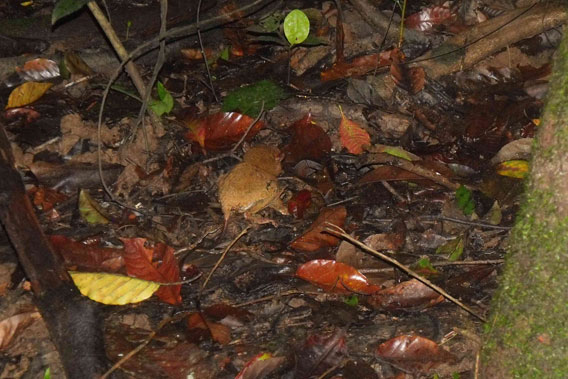
A rescued Horsfield’s tarsier named Lad, shortly after being released, eating an insect. Photo courtesy of Danau Girang Field Centre (DGFC).
Earlier this month, biologists with Danau Girang Field Centre (DGFC) in the Malaysian state of Sabah in Borneo, found and rescued a tarsier from a locally owned palm oil plantation.
“For a day, we kept the animal in a cage at the field centre and fed him with insects”, explained Alice Miles, a Cardiff University student leading a project on tarsier and slow loris ecology at DGFC. “In the evening, we fit him with a radio-collar and released him in the forest. We called him ‘Lad’ because he’s a male and it is short for ‘ladang’, which means ‘plantation’ in Bahasa Malaysia. The following night, we went back to the forest and looked for him using our telemetry equipment. Lad was found about 150-200 m from where he was released, hunting on the ground.”
Aside from Borneo, tarsiers are found in the Philippines and on the island Sulawesi, which is a hotspot for tarsier diversity. The species found on Borneo is Horsfield’s tarsier (Tarsius bancanus) and is listed as Vulnerable by the IUCN Red List. It is imperiled by habitat loss due to logging and forest conversion into monoculture plantations, such as palm oil.

Research field assistant, Saroto bin Payar, releasing the male tarsier in the forest. Payar first found the tarsier in the palm oil plantation after being tipped off by his father. Photo courtesy of Danau Girang Field Centre (DGFC).

Lad, found the following night, hunting insects on the ground. Photo courtesy of Danau Girang Field Centre (DGFC).

Lad, fit with his radio-collar, and back into the forest.. Photo courtesy of Danau Girang Field Centre (DGFC).







